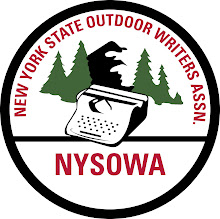By Bob McNitt
Generally speaking, small game hunting season doesn’t seem to generate the interest it once did. Maybe it’s because the once abundant pheasant hunting we enjoyed has nearly disappeared, except for stocked birds, most of them being released by DEC in limited acreage public land areas. Or perhaps it’s because of the steady downturn of ruffed grouse densities and the habitat that once supported them in huntable numbers.
With several small game seasons due to open soon, probably the Oct. 1 opening of the fall turkey season will attract the most interest. While grouse and cottontail rabbit also open on that same date, the odds of those attracting a large following has gone down with each passing season. Oh, there’ll be a few avid upland hunters who’ll pursue them, but nothing like the bygone days of abundance in those two game species plus pheasants.
Another factor might be decreased access to private habitat that may or may not hold a relative abundance of small game like grouse and rabbit. Much of our state forest lands open to public hunting have seen small game densities drop due to poor and deteriorating habitat in recent decades. What little low-growth habitat that emerges is normally consumed by deer as browse. Basically, deer and, in the case of springtime hunting, wild turkeys have become the overwhelming draws for area hunters. These two species are also the favorites of the DEC since neither requires extensive physical management or major habitat improvement.
So what’s left? Gray squirrel, sometimes woodcock, cottontails in winter, geese in September, and predator species. If small game hunting is to survive for future generations to enjoy, things need to change. But how? For years, several avid sportsmen and groups have lobbied to have mourning doves reclassified in New York State as migratory gamebirds, a classification they get in at least 39 other states. Why consider reclassifying doves a migratory gamebird? Even Cornell lists them as such. First is, just like other migratory birds – waterfowl, woodcock, even crows – they benefit from both federal and state management and funding.
With upland gamebird populations dwindling in our state, offering a September dove hunting season would help fill a need without endangering or reducing overall dove populations. Usually September weather is quite pleasant, which would entice more hunters, especially young ones, to discover the joys of hunting, the outdoors, and harvesting their own food – something few youths could do today.
The biggest block to reclassifying doves in New York is akin to perceptions by some to overprotect suburban deer. Because their numbers are so high, droves of doves show up at winter bird feeders once they’ve depleted the natural and agricultural foods that have been available to them previously, a parallel to the overabundant deer that move to suburbs and rural residences to feed when other food supplies dwindle. We have deer hunting as much for species management as for the meat resource they represent. Without sufficient hunting/management, they can decimate habitat that supports both them and other species. Just look at what occurred in state forests such as Beaver Meadow
The mourning dove is one of the most abundant birds in the United States, with an estimated fall population of 500 million birds. For example, the Minnesota population is estimated at 12 million doves, which is three times the fall duck flight through the state. I suspect New York enjoys similar numbers.
Mourning doves are prolific breeders, raising between four to ten young doves per year. The natural mortality rate is high; approximately six out of ten doves do not survive from one year to the next. The U.S. Fish and Wildlife Service has studied and regulated mourning doves for 40 years, and data has shown that a hunting season on them has virtually no impact on their population, in fact it probably benefits them as a prolific species.
Before anyone visualizes how easy it would be to harvest doves at winter bird feeders, let’s explode that daydream. Dove hunting season is an early autumn activity—usually September—and is done near grain fields or other food fields the doves feed in. Hunting is done from stand locations where incoming or outgoing birds may fly by. If you’ve ever watched a dove fly by overhead, imagine trying to hit one with a light shotgun load. It’s akin to bringing down a flying bumblebee with a BB gun.
Some might wonder why hunters would hunt doves, since they’re such small gamebirds. We hunt squirrel, woodcock and teal, all of which are relatively small. And commercially we buy and consume Cornish hen, frog legs, shrimp and smelt. And considering how difficult a rocketing airborne dove is to hit, hunters don’t expect a bounty but rather a tasty supplement for the table.
But, all this aside, if upland hunting--and the money and benefits it produces in New York--is to survive in the future, the time to consider reclassifying doves as migratory gamebirds, which they are, and having an early hunting season for them is one option that really needs serious consideration. You can bet you’ll still see plenty of doves at your bird feeder in winter. All the many states that allow hunting them have proven that.
